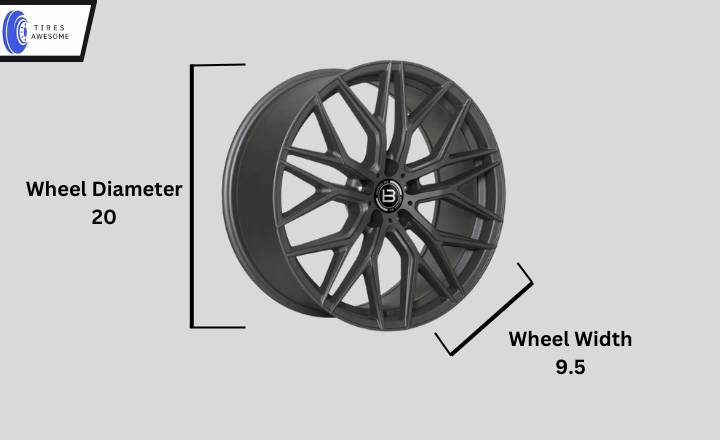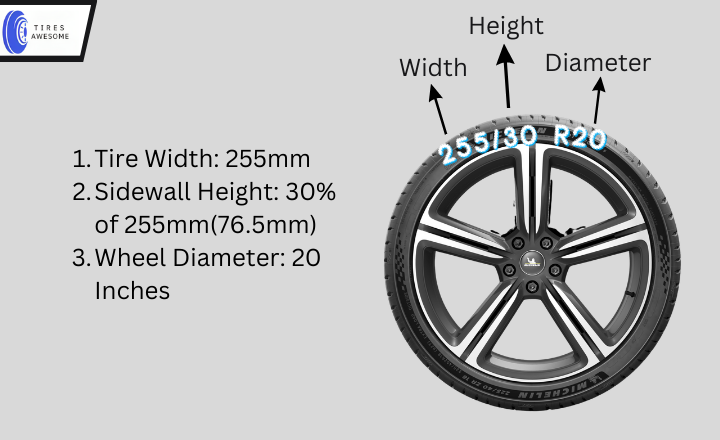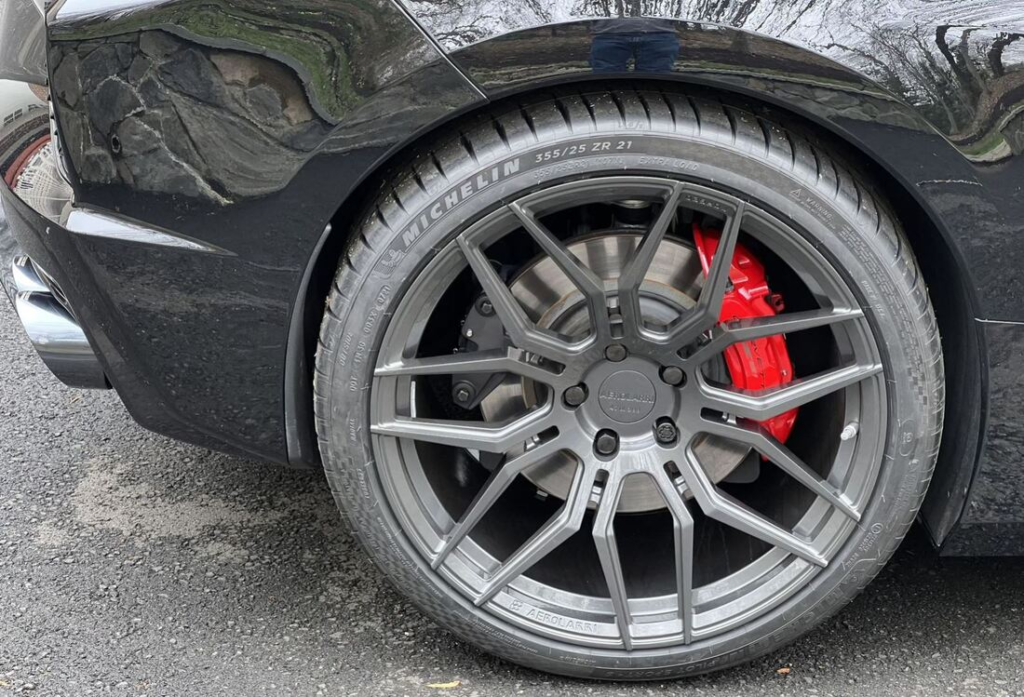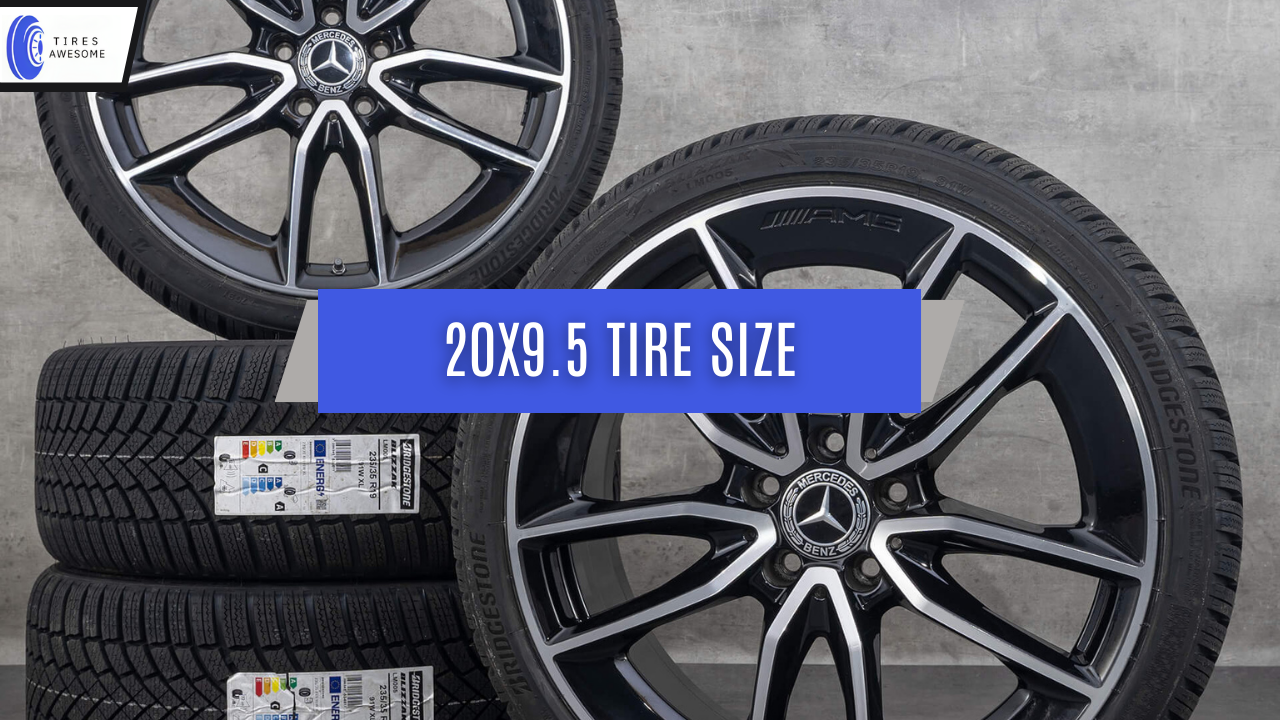If you’re searching for the perfect fit for a 20×9.5 tire size, this article is for you. In today’s post, we will explore what fits this particular rim precisely and discuss the advantages and disadvantages of choosing this Size. This specific tire size has become increasingly popular among car enthusiasts due to its unique combination of width and diameter. So, if you’re ready to elevate your vehicle’s performance to new levels, fasten your seatbelt!
What Does A 20×9.5 Rim Mean?
A 20×9.5 rim is a wheel size that measures 20 inches in diameter and has a width of 9.5 inches. This tire size is commonly used for larger vehicles such as trucks, SUVs, and sports cars. The first number, 20, represents the diameter of the rim in inches, while the second number, 9.5, indicates its width.

What Tire Sizes Fit 20×9.5 Rims?
A few options can provide an ideal fit when finding the perfect tire size for your 20 x 9.5 rims. These tire sizes balance traction, handling, and overall performance. Let’s discuss them:
- The first Size is 255/30 R20, which means the tire has a width of 255 millimeters and an aspect ratio (tire height divided by width) of 30, suited for a 20-inch wheel diameter.
- Another size mentioned is 255/35 R20, similar to the previous one but with a slightly higher aspect ratio of 35.
- A more comprehensive option is the 265/30 R20 tire size, offering a greater width of 265 millimeters while maintaining the same aspect ratio and wheel diameter.
- The 275/30 R20 tire size offers increased width and a lower aspect ratio than the previous options.
- The 275/40 R20 tires provide an even taller sidewall for comfort and protection against potholes or rough road conditions.
- There’s the widest among these sizes – the 285/30 R20; it offers increased traction due to its greater width while maintaining a low profile sidewall.
Benefits of Matching Tire Size With Rim
- Enhanced Performance: Matching the tire size with the rim improves how your vehicle handles and performs. When they are a perfect match, it keeps the part of the tire that touches the road in the best shape, resulting in better traction and stability. This leads to improved control when turning, stopping, or speeding up.
- Improved Safety: If the tires wear unevenly or have different tread patterns because they don’t fit properly, you might not have a good grip on the road. This can make you more likely to skid or slide on wet roads. To ensure your vehicle is safe, it’s essential to use tires and rims that are the right size for each other.
- Better Fuel Efficiency: Using the right tires and rims can improve fuel efficiency. When they fit well together, there is less resistance when the tires move, which saves fuel. Matching your tire size with your rim improves your driving experience and saves fuel money.
- Speedometer Readings: Matching the tire size with the rim helps maintain an accurate speedometer. Using a larger or smaller tire than recommended will alter the wheels’ revolutions per minute (RPM), leading to inaccurate speed readings on your dashboard. This hinders your compliance with speed limits and poses a risk when estimating braking distances.
Guide About Reading 20×9.5 Tire Size
There are three tips to read a tire’s Size:
- The first number in the sequence represents the tire’s total width, measured in millimeters. This measurement indicates the distance between one sidewall and the other when the tire is appropriately mounted on a wheel.
- The second number, a percentage, this figure assists in calculating the actual height of the tire’s sidewall.
- The last number signifies the recommended diameter of an appropriate wheel for that particular tire size. This dimension is measured in inches and determines the tire’s and wheel’s compatibility.
Let’s consider the 255/30 R20 tire. The first number represents the tire’s width, which is 255 millimeters. The second number, 30, indicates the percentage of the width that equals the height of the sidewall. The sidewall height is around 76.5mm or 30% of 255mm. The letter R indicates this specific tire is designed for wheels with a diameter of 20 inches.

What Is The Best 20×9.5 Wheels Tire Size?
One popular choice is the 265/30 R20 tire size, which balances performance and comfort, making it suitable for everyday driving and some spirited driving experience. You can expect improved handling characteristics and a sleek appearance on your vehicle.
If you want to enhance the ride quality and visual appeal with a slightly wider tire, then the 275/30 R20 size might be worth considering. This site provides more contact patches between the tire and the road surface, resulting in better traction and stability during acceleration, cornering, and braking maneuvers.
What Is The Max Tire Size For 20×9.5 Rims?
The 285/30 R20 tire size is the widest that can fit safely on a 20 x 9.5 rim and gives you better traction and stability while making your vehicle look better. To make sure the tire fits properly, you need to have enough space in the wheel well. If the tire is too wide, it can rub against the suspension or fenders, which is unsafe and can damage your car.

Having wider tires also improves how well your car handles. With more rubber on the road, you have better grip and control when turning or accelerating. The tread pattern and compound of the tire also make a big difference in how well it performs on different surfaces.
What Is The Smallest 20×9.5 Tires Size?
The tire size 255/30 R20 is often considered the smallest recommended option for a 20×9.5 wheel. This Size balances performance and aesthetics, providing the desired look of a giant wheel without compromising functionality. It offers an ideal width, aspect ratio, and diameter combination to ensure proper fitment and sufficient ground clearance.
Opting for significantly smaller tires can affect handling, comfort, and traction on the road. While choosing a smaller size for a sportier look may be tempting, finding a middle ground between style and practicality is crucial.
What Vehicles Are Compatible With 20×9 Tires?
Trucks and SUVs, such as the Ford F-150, Dodge Ram 1500, Jeep Wrangler, and Toyota Tacoma are popular choices for these tires due to their rugged build and off-road capabilities. The wider stance provided by 20×9 tires enhances the performance and handling of these larger vehicles, making them well-suited for various terrains.
Sports cars like the Chevrolet Camaro or Ford Mustang can also be equipped with 20×9 tires size to improve traction and cornering ability. The lower profile of these tires complements the sporty design of these vehicles while enhancing their overall performance on the road.
Conclusion
To find the correct rim for a 20×9.5 tire size, consider its Size, width, and weight capacity. Consult a tire expert or check the manufacturer’s recommendations for a proper fit. Also, choose tires suitable for your intended vehicle use, such as road driving or off-roading. By following these tips and being cautious, you can select the appropriate tire size for your 20*9.5 rims and enjoy a safe and comfortable ride.
FAQs
Can I Change My Rim Size?
Yes, but ensure the new rims fit your car by checking the bolt pattern, offset, and diameter. More giant rims can improve handling and make your vehicle look more aggressive, but they might make the ride less comfortable and use more fuel.
What Is The Best Rim Width For Tires?
The optimal rim width for most standard tire sizes ranges from 0.8 to 0.9 times the tire section width when used with the lowest inflation pressure for ideal performance. In regular usage, rims between 0.7 and 0.95 times the tire section width ensure proper functioning of the tires.
Can Wrong-Size Tires Damage The Car?
Yes, they can cause damage. If the tires are too small, they may not handle the weight of your vehicle correctly and also affect speedometer and odometer readings. Using tires that are too large can cause clearance issues with car components, leading to damage over time.

